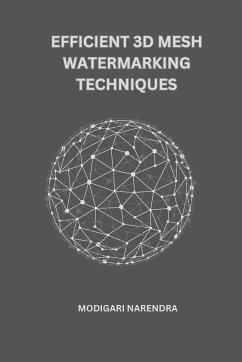Efficient 3D mesh watermarking techniques aim to embed digital watermarks into 3D mesh models in a computationally efficient and effective manner. These techniques leverage optimization algorithms and advanced data encoding schemes to ensure minimal impact on the model's visual quality while providing robust protection against unauthorized duplication and tampering.The efficiency aspect focuses on optimizing the computational resources required for embedding and extracting watermarks from large-scale 3D meshes. By leveraging efficient algorithms and data structures, these techniques minimize processing time and memory usage, enabling practical application in real-time scenarios and handling complex mesh models.Furthermore, these techniques prioritize the preservation of visual fidelity and geometric integrity of the original 3D mesh. The watermarking process carefully analyzes the mesh geometry, topology, and attributes to identify optimal embedding locations that are perceptually transparent. This ensures that the embedded watermark does not introduce noticeable distortions or artifacts that could degrade the visual quality or alter the geometric properties of the mesh.Efficient 3D mesh watermarking techniques also emphasize the robustness of the embedded watermark. They incorporate error correction codes, encryption mechanisms, and authentication techniques to withstand common attacks such as mesh simplification, noise addition, or vertex reordering. This ensures that the watermark remains intact and detectable even in the presence of intentional or unintentional modifications to the mesh.Overall, efficient 3D mesh watermarking techniques strike a balance between computational efficiency, visual quality preservation, and robustness, making them suitable for various applications such as copyright protection, content authentication, and intellectual property rights management in the 3D modeling and entertainment industries.








